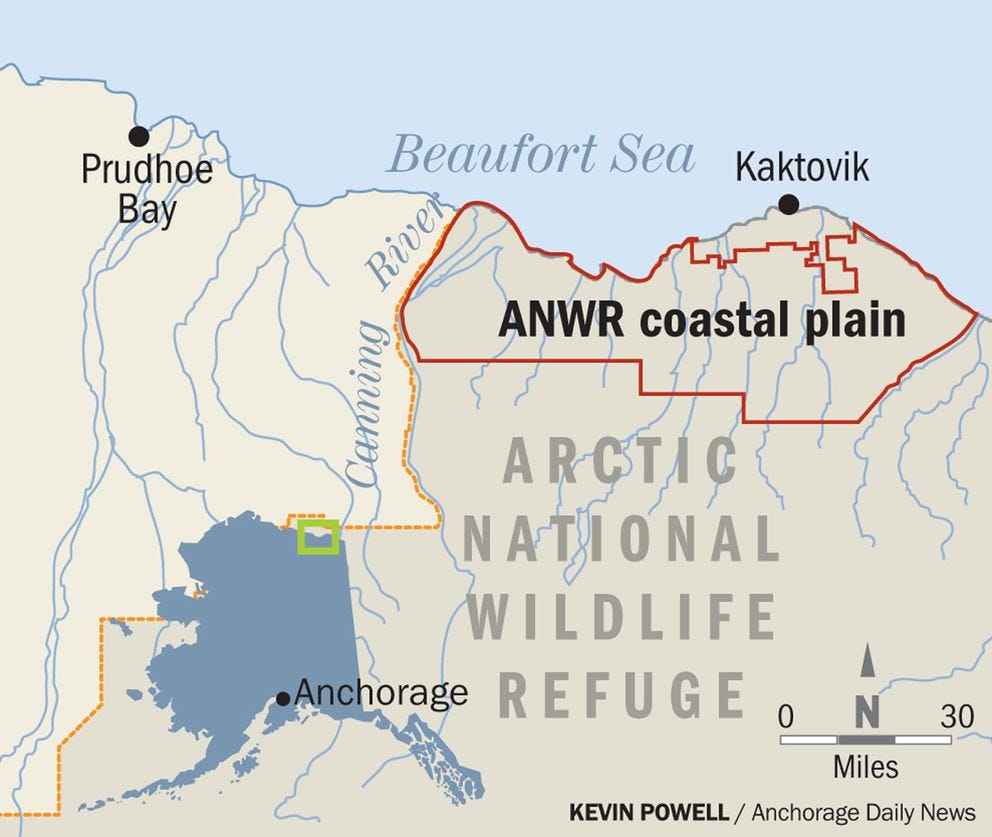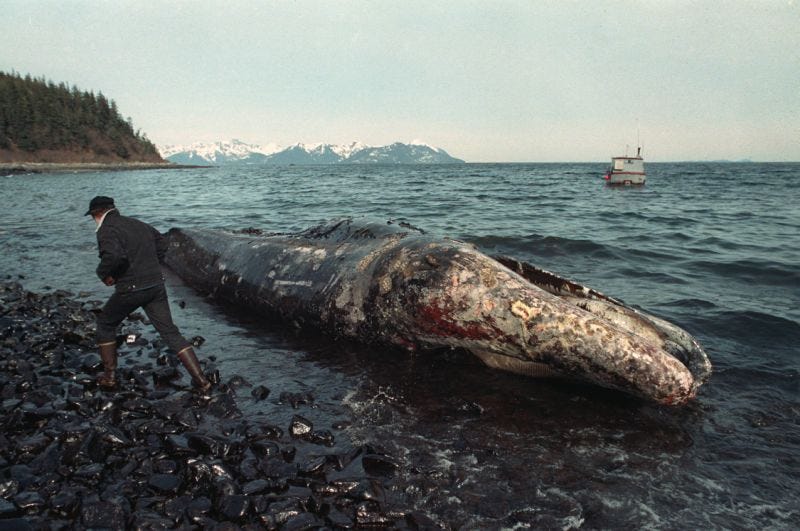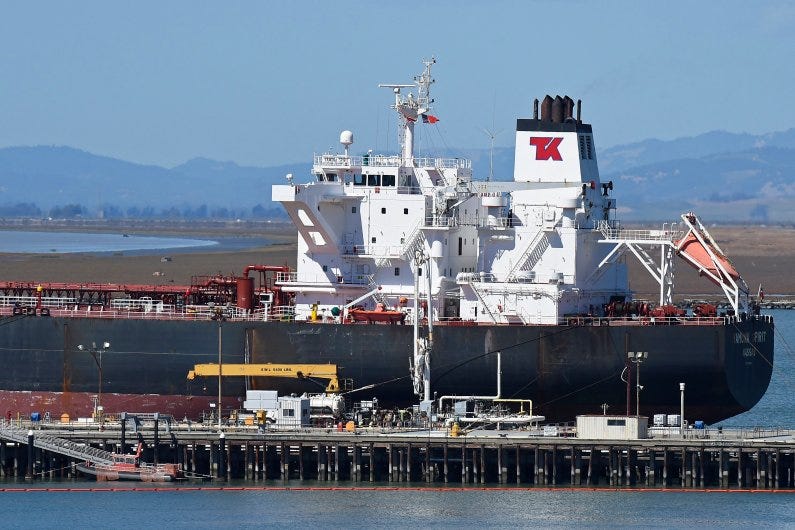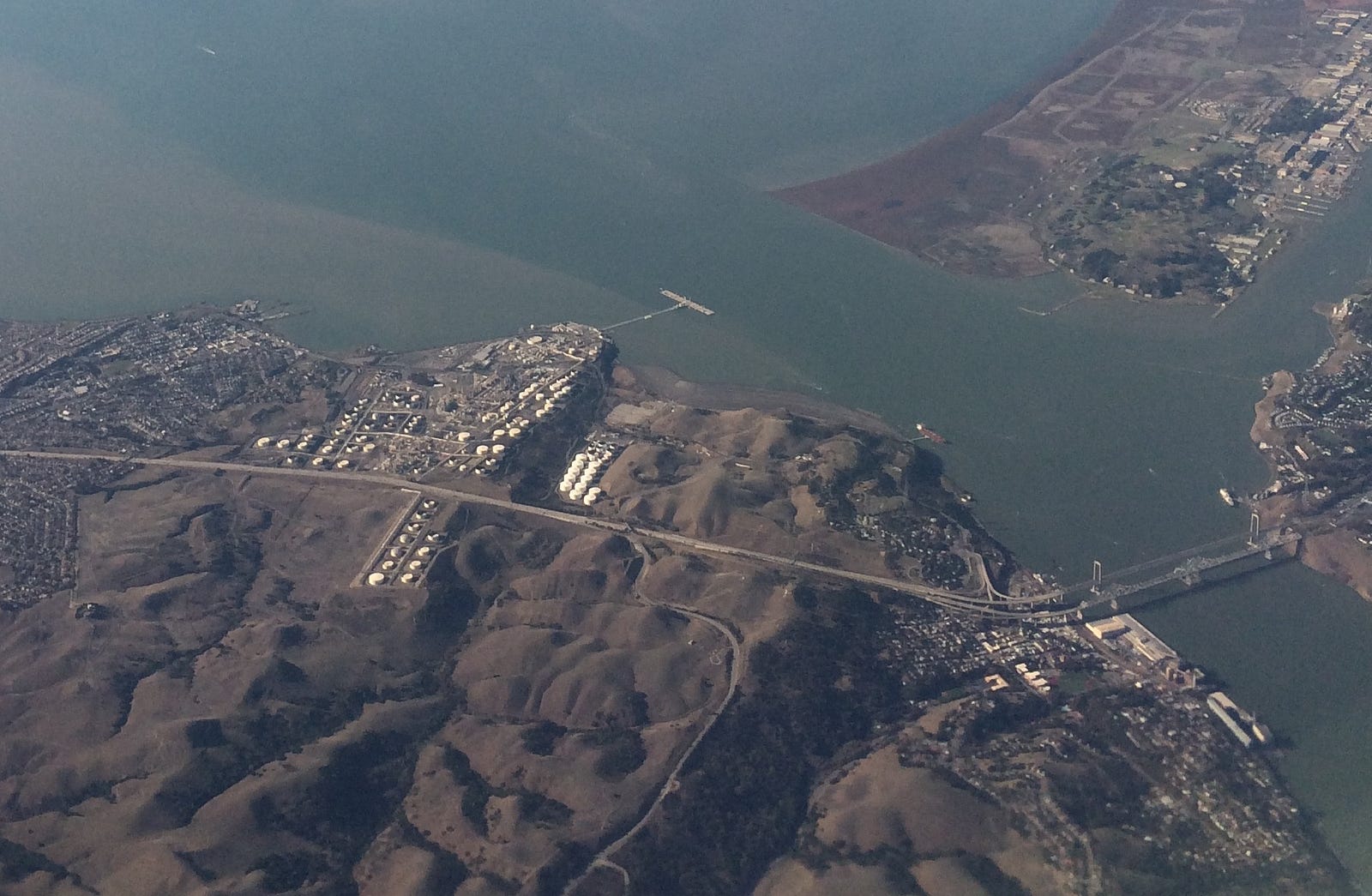- Blog
- Sustainable Economic Systems
- California Climate Accountability
- The Alaskan Arctic to California Crude Connection
The Alaskan Arctic to California Crude Connection
by Gary Graham Hughes, Senior CA Advocacy Campaigner

Donate Now!
Your contribution will benefit Friends of the Earth.
Stay Informed
Thanks for your interest in Friends of the Earth. You can find information about us and get in touch the following ways:
California Cap-and-Trade Program Greenwashes Refining of Crude Oil Extracted from Endangered Alaskan Arctic Landscapes
One of the acute climate change and ecosystem protection issues confronting citizens of the United States and beyond is the growing threat from the fossil fuel industry to exploit the priceless and endangered terrestrial and marine wildernesses of the Alaskan Arctic. The Arctic Ocean, the Arctic National Wildlife Refuge (ANWR) and the Western Arctic of Alaska are all in Big Oil’s crosshairs. While this drilling threat gets public and media attention, the destinations of the crude oil coming out of the Alaskan Arctic, such as the California refinery sector, get far less.
This dynamic is on the verge of changing, as the threat of increased oil tanker traffic in California to feed the refinery sector is raising awareness about the sources of that crude oil.
Exploring this connection requires background context. Currently, important attention is rightfully given to the Dec. 2017 congressional passage of far-reaching tax legislation that included provisions for the initial approval of federal mineral lease sales for oil and gas exploration and extraction in the coastal plain ecosystem of ANWR.
Congressional Republicans and the Trump Administration green-lighting the opening of the refuge to drilling remains very newsworthy on its own. Also newsworthy is the Trump Administration’s capricious process for public participation and comment on the release of a draft 5-year plan for outer continental shelf offshore drilling in U.S. federal waters, including Interior Secretary Ryan Zinke’s back-and-forth exemption of Florida and the inclusion of Arctic leases.

As if that were not enough, those aggressive moves were accompanied by oil and gas lease sales in the National Petroleum Reserve–Alaska — lease sales that are currently being challenged in court by a coalition of organizations, including Friends of the Earth, for failure to comply with our nation’s bedrock environmental laws.
Of equal importance in understanding the full extent of Arctic drilling, a science-based climate assessment concludes that fossil carbon stocks in the Arctic must stay in the ground if the global climate is to have any possibility of staying within the proscribed temperature rise thresholds necessary to avoid catastrophic global climate change.
To connect Arctic Alaska with California, it helps to have a basic understanding of the historic infrastructure connection between upstream and downstream oil industry operations that allow Alaska North Slope crude to be extracted, piped, shipped and processed into consumer products. “Upstream” in this instance refers to infrastructure of oil extraction and production (e.g., Arctic oil and gas extraction), “midstream” refers to transportation (e.g., the Trans-Alaska Pipeline System, railways, oil tankers, and barges), and “downstream” refers to refining, processing, and distributing fossil fuel products to consumers.
Historically, about half of the crude oil that comes out of the Trans-Alaska Pipeline System has been shipped by tanker to refineries in California (the other half is sent to refineries in Washington state, with a much smaller fraction sent to foreign markets). A historical tidbit that describes this connection: Before disastrously running aground in Prince William Sound in March 1989, the Exxon Valdez oil tanker was bound for the California port of Long Beach to deliver the crude onboard to refineries in the Los Angeles area.

The potential for future Alaskan Arctic crude oil exports to foreign markets, especially those in Asia, cannot be ignored — especially in light of the 2015 lifting of the federal prohibition on the export of crude oil from the U.S. to foreign markets. It is nonetheless clear that crude oil extracted from the Alaskan Arctic is primarily intended to feed refineries on the West Coast of the lower 48 states — especially California. Alaska Sen. Lisa Murkowski has said as much herself when promoting the opening of the Arctic Refuge and celebrating the Trump-Zinke fossil-fueled vision of “American energy dominance.”
Effective climate policy must include location-based analysis and actions at each step in the process. Discussions focused on celebrating California’s climate leadership typically omit that the state’s oil refinery sector is heavily reliant on imported oil resources from beyond our state borders — including significant imports from Arctic Alaska.
This crude oil connection between the Alaskan Arctic and California refineries can also be illuminated with a timeline of recent events regarding current and future upstream extraction, downstream refinery expansion efforts, and the climate politics and policies affecting the downstream refinery sector in California. Of special importance is the summer 2017 reauthorization of cap-and-trade, the market-based scheme for addressing greenhouse gas emissions from stationary sources such as the refinery sector in California. The high-profile cap-and-trade program is often described as a leading reason why the state should be celebrated as a global climate leader.
Discussions focused on celebrating California’s climate leadership typically omit that the state’s oil refinery sector is heavily reliant on imported oil resources from beyond our state borders.
California Cap-and-Trade Countdown to Arctic Refuge Drilling Approval
Sept. 2016: Ambitious climate legislation passed in the summer by the California legislature (SB 32) is signed into law, setting 2030 emissions reductions objectives at 40 percent below 1990 levels. This bill explicitly did not provide extension of the California cap-and-trade program, which was legally set to expire in 2020.
In a separate but related occurrence that same month, the Yamuna Spirit oil tanker, having arrived bearing crude oil loaded at an Arabian port, spills oil at the marine terminal in San Francisco Bay at the Phillips 66 Rodeo refinery. Due to dangerous impacts on air quality, local authorities issue a “shelter in place” warning for surrounding communities. The incident results in hundreds of odor complaints, and dozens of residents are forced to make hospital visits for a wide variety of respiratory and health ailments.

Nov. 2016: Trump is elected.
Dec. 2016: The Department of the Interior holds mineral rights lease sales of a lesser known Arctic Alaska federal public lands holding: the National Petroleum Reserve–Alaska (NPR-A). NPR-A is arguably of equal importance for wildlife conservation and ecosystem integrity as ANWR. ConocoPhillips confidently secures mineral rights to tens of thousands of acres of the NPR-A that are congruent with expansion projects they already have in development. Not so coincidentally, one of the majority owners of the Trans-Alaska Pipeline System, which would transport this crude, ConocoPhillips is also historically a big player in the California refinery sector. Phillips 66, in an intricate partnership with ConocoPhillips, is the current owner and operator of the oldest petroleum refining facility on San Francisco Bay, at the mouth of the Carquinez Strait.
Jan. 2017: ConocoPhillips publicly announces the Willow NPR-A discovery in Alaska as a significant new oil find whose “economic viability” is improved by “proximity to existing infrastructure” — namely access to the Trans-Alaska Pipeline.
A week later Trump is inaugurated.
Feb. 2017: California Air Resources Board (CARB) develops a draft Scoping Plan for meeting California’s ambitious 2030 emissions reductions objectives. The Scoping Plan draft reinforces commitment to the “refinery rule” to require sector-wide direct refinery emissions reductions for meeting legislated greenhouse gas emissions reductions goals.
March 2017: Spanish energy giant Repsol and Armstrong Energy Corp. announce “Nanushuk Play” at Pikka, described as the most significant onshore Alaskan Arctic oil discovery in decades — and well within the growing reach of the Trans-Alaska Pipeline North Slope expansion.
May 2017: The question of how California will meet ambitious 2030 emissions reductions goals established by 2016 legislation becomes an over-arching political debate in Sacramento. Discussions on finalizing the CARB Scoping Plan, including the proposed “refinery rule,” grind to a halt. A progressive bill is introduced in the Senate to significantly reform the cap-and-trade program, including the elimination of industry-friendly loopholes such as free allowances (free permits to pollute) and scientifically dubious and socially unjust offsets. The bill (SB 775) is immediately shot down and never makes it out of committee.

June 2017: Phillips 66 quietly initiates a permit revision process with local air district authorities to allow a 100 percent increase in oil tanker deliveries to its marine terminal at their SF Bay Rodeo refinery — site of the Sept. 2016 Yamuna Spirit oil spill. Neither the company nor the local permitting authority provide any transparent information about where the tankers would be sourcing oil for the proposed increase in tanker deliveries to the facility.
While ConocoPhillips once owned and is now a limited partner in Phillips 66, the largest institutional investor in the company is Berkshire Hathaway, owned by billionaire Warren Buffett.
July 2017: On the 40-year anniversary of the opening of the Trans-Alaska Pipeline, California Gov. Jerry Brown introduces and steamrolls an oil industry cribbed cap-and-trade program reauthorization deal through the state legislature. Industry giveaways amount to billions of dollars of free permits, and various offset protocols remain a cornerstone to the carbon market design, which is reauthorized for operation until 2030. Grassroots and environmental justice opposition to the legislation is widespread and unified across the state. Frontline communities denounce Gov. Brown and Big Oil’s cap-and-trade deal for perpetuating ongoing environmental injustices with too many giveaways to industry.
The deal prohibits state or local pollution authorities like CARB from directly regulating carbon emissions from refineries, as it legislates the market mechanism of cap-and-trade as the sole means within the state for regulating carbon emissions from stationary sources like refineries out to 2030. The deal is signed amid great fanfare as an indicator of California’s global climate leadership. Under the law, California refineries can expand production and associated greenhouse gas pollution — so long as California stays within the statewide market cap overall by 2030. As a result, despite California’s purported climate leadership, an increase in crude delivered to California refineries from Arctic Alaska can legally occur under the framework of the market-based mechanism.
Aug. 2017: Tens of thousands of Bay Area and California residents voice opposition to the proposed Phillips 66 SF Bay marine terminal expansion by submitting comments on the initial scoping of the project under review processes required by the California Environmental Quality Act. Grassroots and environmental justice groups are able to force the local permitting authority to extend the scoping comment period and to hold informational meetings in affected communities. The local air district and Phillips 66 still refuse to provide any information regarding the details of the cause of the Sept. 2016 Yamuna Spirit spill, nor as to the source of oil intended to be delivered with the increased oil tanker traffic to the Phillips 66 SF Bay refinery. Concerned stakeholders draft informed scenarios for possible crude sourcing, looking at Alaska North Slope crude, at tar sands diluted bitumen via the Trans Mountain pipeline terminal in British Columbia or other foreign sources.
Nov. 2017: When challenged during a speech in Bonn at a side event of the United Nations climate talks, California Gov. Brown responds to indigenous protestors interrupting his speech with chants about the imperative to keep fossil fuels in the ground by telling them that someone “should put you in the ground.” Later the governor tells media that he was joking. Brown continues to celebrate California’s cap-and-trade program as an example for the world to follow. Brown goes on the record promoting linkage of the California carbon market with the European Union Emissions Trading System (EU-ETS). The EU-ETS is a target of severe criticism from European climate justice advocates due to permissive requirements, financial collapse of the price of credits, and consequent failure of the European market to achieve emissions reduction goals.

Dec. 2017: CARB approves a Final 2030 Scoping Plan with the fossil fuel-friendly cap-and-trade program as a centerpiece, confirming potential for provision of several billions of dollars’ worth of subsidies to the California petrochemical refinery sector through 2030. Representatives of the Western States Petroleum Association, an oil industry group to which both ConocoPhillips and Phillips 66 belong, testify in support of the cap-and-trade program. The “refinery rule” for requiring direct emissions reductions from refineries is excluded from the Final 2030 Scoping Plan, with state officials citing the cap-and-trade legislation that mandates that the market mechanism serve as the solitary means of regulating refinery carbon emissions until 2030. Independent analysis of the cap-and-trade program by Near Zero, a research organization at the Carnegie Institute for Science at Stanford University, shows that real emissions from the refinery sector in California are actually increasing, even as petrochemical facilities successfully comply with the legal requirements of the market-based mechanism.
A week after approval of the Final 2030 Scoping Plan in California, future Arctic Refuge lease sales for oil drilling is approved by Congress, and signed into law in the last days before the holiday. Alaska Sen. Murkowski celebrates the opportunity to ensure that West Coast refineries, such as those in California, will be positioned to receive consistent deliveries of Alaskan Arctic crude oil into the distant future. Activists from across Alaska, California, and the country confirm their commitment to protecting ANWR and other irreplaceable wild areas in the Alaskan Arctic while Big Oil celebrates the business certainty for long-term refinery production offered by the market-based mechanism. Outraged and angered local front-line communities and environmental justice groups get little media attention, and Gov. Jerry Brown continues his posture as a global climate leader.
Jan. 2018: Halting the proposed increase of oil tanker deliveries to the Phillips 66 Rodeo refinery in SF Bay is identified as a 2018 priority for California and SF Bay Area climate and environmental justice advocates.
Feb. 2018: At the beginning of the month, ConocoPhillips announced 2017 Alaska earnings of more than $650 million, nearly triple their profits from the year prior. In the Arctic itself, the darkness of winter is no longer sufficient to assure the maintenance of frozen conditions, and the cryosphere gives tense signs of unraveling. Unprecedented warm temperatures lead to the loss of more than half of the sea ice cover in the Bering Sea in two weeks, resulting in record lows for Arctic Ocean sea ice extent for the month of February. Communities throughout the Alaskan Arctic grapple with the physical impacts of the warmest February in recorded history. At the end of the month, the California Energy Commission published statistics on 2017 crude oil sourcing for refineries in California showing a 10 percent increase in crude oil deliveries from Alaska to California, compared to the previous year. According to CEC numbers for 2017, California set a new annual record for foreign crude oil imports, and the state’s refineries processed the second highest total sum of crude oil since the 2008 economic crisis.
Making the Alaskan Arctic to California Crude Connection
Understanding the clear link between the historic and proposed extraction of fossil fuels in Arctic Alaska and the operational connection to the refinery sector in California is one of the best means of identifying actions for supporting Alaskan Native communities and allies in the Far North, as well as communities shouldering the burden of pollution from refineries in California.
Many voices are stating a commitment to accompany these communities in their advocacy for protecting marine and terrestrial Arctic landscapes, and the cultures that are shaped by them. A permissive market-based regime that lacks environmental integrity and that provides significant subsidies and long-term business certainty to the polluting petroleum-refining sector in California is undercutting these efforts. The long-term reputational risk for California is that this pro-fossil fuel market-based mechanism is ultimately a stain on the state’s aspirations of global climate leadership. Truly effective efforts to implement equitable and science-based climate and energy policy are built upon the scientific and moral imperative to “Keep It in The Ground,” and require actions to reduce the fossil fuel sector at all infrastructure elements in the fossil fuel lifecycle, and to place equity and justice at the center of all proposed policy solutions.
